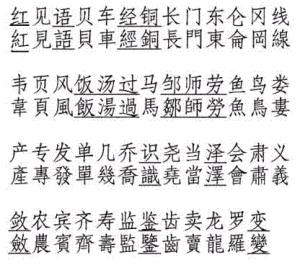The Chinese is language is one the most ancient and complex in the world. It is officially the oldest written language in the world with a history spanning at least six thousand years. The Chinese alphabet is made of upwards of 40,000 characters which represent sounds and are used in sequence to make up words.
There are many dialects of Chinese, but only three are spoken widely throughout the country. The most common by far is Mandarin Chinese, which is the official dialect of China, and is the language taught in almost all Chinese schools and used on TV and in the media. Most Americans who learn Chinese choose to study Mandarin because of its prevalence in Chinese culture.
Cantonese is the second-most common dialect, and is used widely in Hong Kong, Guangdong, and southern Guangxi Zhuang. Because of this large regional concentration, many Chinese immigrants and expatriates to the nearby regions of the pacific coast of the United States (Washington, Oregon, and California) speak Cantonese.
Toisanese, another dialect, emerged from the Guangdong region. It is not nearly as commonly heard as Mandarin or Cantonese, and is not used in the media.

Simplified written Chinese (bottom lines) uses less pen strokes and lines than traditional (top lines). www.quora.com
Though the verbal languages cannot be universally understood by all Chinese, the written language can be understood by all who understand Chinese. The written form consists of characters which are simplified, traditional, and phonetic or slang. Simplified characters are condensed versions of traditional and classical Chinese characters, and use less pen strokes.
There also exists a form of “English Chinese” in which Chinese sounds and words are written phonetically in the roman alphabet to be better understood and learned by foreign speakers. This written form is often seen in fortune cookies.
Unlike English and romantic languages, verbs, nouns, or adjectives do not have to agree with each other in tense in Chinese. Additionally, there does not exist plural and singular forms of words. Instead a number is added to the sentence to tweak the meaning.
The Chinese language is so complex and vastly different than many other languages that translation and interpretation proves an extremely difficult task, and translators must keep in mind not only literal meaning but cultural differences and how the different languages represent differing worldviews of the two cultures.